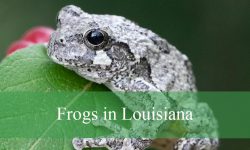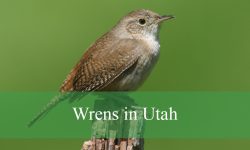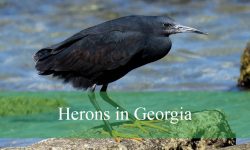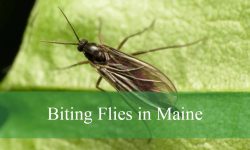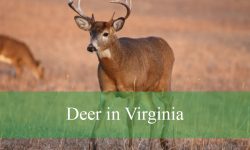Colorado is a fantastic place for birdwatching, especially for members of the Corvidae family, such as jays. This article explores the four most common jay species in Colorado: Blue Jay, Steller’s Jay, Pinyon Jay, and Woodhouse’s Scrub-Jay.
You’ll learn how to identify them, understand their behavior, habitat, diet, vocalizations, and discover fun facts about each species.
Blue Jay (Cyanocitta cristata)
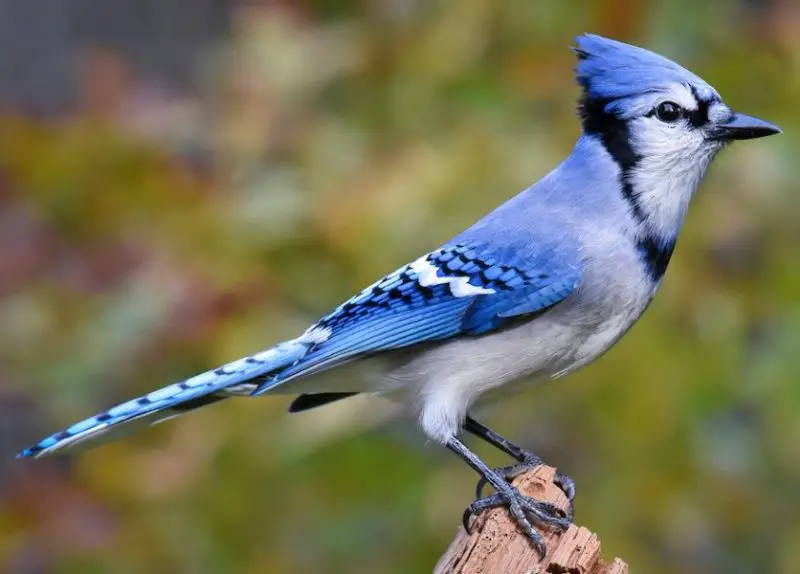
Description and Identification
Blue Jays are medium-sized, striking birds measuring 22–30 cm (9–12 inches) in length, with a wingspan ranging from 34–43 cm (13–17 inches), and they typically weigh between 70–100 grams (2.5–3.5 oz). Their most recognizable feature is their bright blue plumage, which covers the back, wings, and tail, contrasted with white underparts. A distinctive black “necklace” or collar wraps around their throat, extending slightly toward the sides of the head, adding to their unique appearance.
Their prominent crest atop the head is another signature trait, which can be raised to appear alert or aggressive and lowered when the bird is relaxed. Wing feathers display black and white barring patterns, which are noticeable in flight. Juvenile Blue Jays are slightly duller in coloration, making adults easier to identify. Observing their bold blue color, size, and crested head helps distinguish them from other local birds, such as Steller’s Jays or scrub jays.
Behavior
Blue Jays are highly intelligent and social birds. They are often observed in small family groups or larger flocks outside the breeding season. These birds are known for their territorial nature and can be aggressive, frequently chasing smaller birds away from feeders or nesting sites.
Their intelligence extends to problem-solving and planning. Blue Jays are known to use tools occasionally, remember locations of cached food, and even communicate threats to other jays. They engage in playful behaviors such as hanging upside-down from branches or engaging in mock fights. Despite their territorial tendencies, they may form temporary foraging groups in autumn when acorns and nuts are abundant.
Vocalizations
Blue Jays are among the noisiest birds in North America. Their signature calls are loud, harsh “jay! jay!” sounds that serve to announce territory or signal danger. In addition to their classic calls, Blue Jays produce a wide variety of whistles, clicks, rattles, and other imitated sounds.
Remarkably, these birds are skilled mimics and can imitate the calls of hawks, such as the Red-shouldered Hawk or Cooper’s Hawk, to intimidate smaller birds or deter competitors. Birdwatchers often identify Blue Jays not just by sight but also by their complex and variable vocal repertoire.
Diet
Blue Jays are omnivorous and have a diverse diet that includes seeds, nuts, fruits, insects, and occasionally small vertebrates like frogs or nestling birds. Acorns are a particular favorite, and Blue Jays play a vital role in forest regeneration through their food-caching behavior.
These birds often hide or bury nuts and seeds to eat later, demonstrating remarkable memory skills by returning to retrieve them weeks or months later. This behavior not only sustains the birds during scarce seasons but also contributes to the growth of new trees, showing their ecological importance beyond simple feeding habits.
Habitat and Distribution
In Colorado, Blue Jays are most commonly found in eastern deciduous forests, suburban neighborhoods, parks, and along forest edges. They prefer areas with tall trees for nesting, often selecting oak or pine trees, while open spaces allow them to forage efficiently.
These birds are highly adaptable and thrive near human settlements, benefiting from bird feeders and landscaped gardens. Their distribution across Colorado is concentrated in regions with mixed woodland and urban green spaces, although they are less common in the mountainous western parts of the state.
Fun Fact
Blue Jays are sometimes referred to as “ecosystem engineers” because of their role in oak forest propagation. By caching acorns and often forgetting some of them, these birds inadvertently plant new oak trees. This behavior not only ensures a future food source for themselves but also contributes to the growth and maintenance of healthy forest ecosystems.
Steller’s Jay (Cyanocitta stelleri)
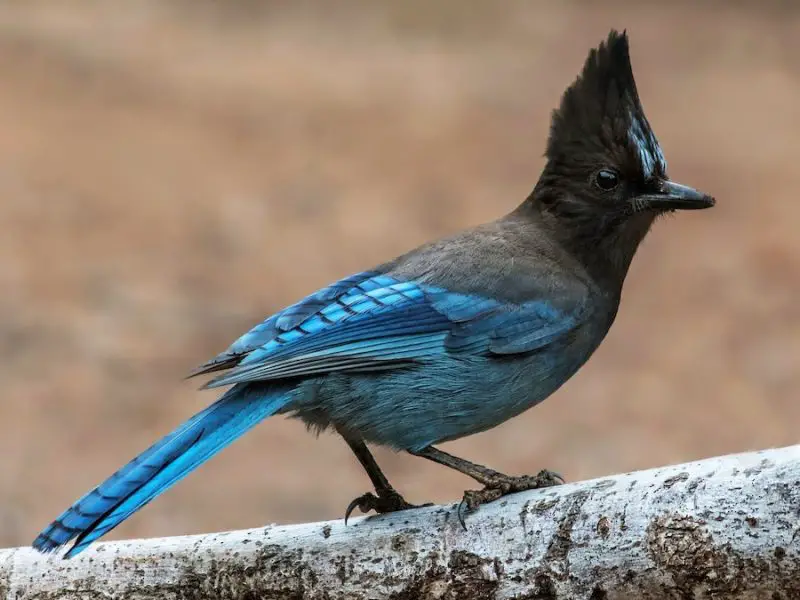
Description and Identification
Steller’s Jays are striking, medium-to-large birds recognized by their deep, vibrant blue bodies contrasted with black heads and a prominent, sharp crest. They measure approximately 28–34 cm (11–13 inches) in length, with a wingspan of 40–45 cm (16–18 inches) and weigh between 100–140 grams (3.5–5 oz).
The bold black-and-blue coloration sets them apart from Blue Jays, particularly the black head and upper chest, which provide a dramatic contrast to the cobalt blue back, wings, and tail. The crest atop their head is erect and can be raised to display alertness or lowered when relaxed. Wing feathers often show subtle black barring, and their long tail adds to their sleek, agile appearance. Juveniles are slightly duller with less distinct black coloring, making adult birds easier to identify in the wild.
Behavior
Steller’s Jays are bold, inquisitive, and highly social birds. They are frequently seen in pairs or small groups, especially around food sources or nesting sites. Their curiosity leads them to approach campsites, picnic areas, and even hikers, often scavenging for scraps.
These jays are playful and intelligent, sometimes engaging in mock fights, hanging upside down from branches, or stealing food from other birds and humans. Their social interactions include a complex mix of vocalizations and gestures, which helps them establish dominance and maintain cohesion within groups. Territorial disputes can be intense, particularly during the breeding season, when they actively defend nesting areas from intruders.
Vocalizations
Steller’s Jays are highly vocal, producing a wide variety of loud, harsh calls, including rattles, screeches, whistles, and chattering sounds. Their calls can vary depending on context, from alarm signals to social interactions within flocks.
These jays are also skilled mimics and can imitate other birds, including hawks, to scare potential competitors or threats. In areas with human activity, they may mimic mechanical sounds or even elements of human speech, which can surprise and entertain observers. Birdwatchers often identify them by this distinctive, varied repertoire in addition to their bold coloration.
Diet
Steller’s Jays are omnivorous and opportunistic feeders. Their diet includes seeds, nuts, berries, insects, eggs, and small animals. They are particularly adept at raiding nests of other birds, taking eggs or young chicks when the opportunity arises.
Like Blue Jays, they also cache food, particularly nuts and seeds, which they may retrieve later, demonstrating excellent memory. Their foraging behavior helps disperse seeds throughout their habitat, contributing to forest regeneration and ecosystem health.
Habitat and Distribution
In Colorado, Steller’s Jays are commonly found in coniferous forests and mountainous regions, especially within the Rockies. They prefer higher elevations where pine, fir, and spruce trees dominate the landscape.
These jays are highly adaptable and can thrive near human activity in forested campgrounds, picnic areas, and hiking trails, provided there is sufficient tree cover for nesting. They are less common in lowland areas or open plains, favoring shaded, forested environments where food sources are abundant.
Fun Fact
Steller’s Jays are remarkable mimics. When habituated to humans, they can imitate speech, household noises, or even vehicle sounds. This playful mimicry makes them entertaining and endearing to campers, hikers, and bird enthusiasts, while also demonstrating their intelligence and adaptability in both natural and human-influenced environments.
Pinyon Jay (Gymnorhinus cyanocephalus)

Description and Identification
Pinyon Jays are medium-sized, slender birds measuring approximately 28–33 cm (11–13 inches) in length, with a wingspan of 35–38 cm (14–15 inches) and weighing between 80–100 grams (2.8–3.5 oz). Their plumage is a uniform bluish-gray, lacking the contrasting black-and-blue patterns seen in Steller’s Jays, giving them a more muted, streamlined appearance.
The head features a subtle crest, which can be slightly raised when the bird is alert, and their tail is moderately long and squared. Their overall body shape is slender and agile, optimized for quick, flock-based movements. Juveniles resemble adults but often appear slightly duller in coloration, with less pronounced crests. Observers can identify Pinyon Jays by their uniform bluish-gray color, slender body, and tendency to move in tight, noisy flocks.
Behavior
Pinyon Jays are extremely social and highly cooperative birds. They typically live in large flocks that may number from a few dozen to several hundred individuals, particularly outside the breeding season. These birds are rarely seen alone and maintain constant communication within the flock, coordinating foraging, roosting, and flight patterns.
Their social behavior extends to cooperative foraging and food caching. Pinyon Jays work together to locate abundant pinyon pine seeds and distribute food efficiently among the flock. They are intelligent, adaptable, and persistent, often returning to areas where seeds are plentiful year after year.
Vocalizations
Pinyon Jays produce soft, continuous chattering sounds, often described as “cheep,” “chur,” or “kree” calls. These vocalizations serve multiple purposes, including flock cohesion, alerting others to predators, and coordinating group movements during foraging.
Unlike the loud and harsh calls of Blue Jays or Steller’s Jays, Pinyon Jays’ vocalizations are more subtle but constant, creating a soft background hum within flocks. Birdwatchers often recognize them by the steady, intricate chatter that echoes through pinyon-juniper woodlands.
Diet
The diet of Pinyon Jays is heavily centered on pinyon pine seeds, which they harvest and cache in the ground for later consumption. This seed-caching behavior is vital for the regeneration of pinyon pine forests.
In addition to pine seeds, Pinyon Jays consume other nuts, seeds, berries, and insects, particularly during the breeding season when protein-rich food is necessary for raising chicks. Their foraging efficiency and habit of spreading seeds over large areas make them essential agents of forest growth and ecosystem maintenance.
Habitat and Distribution
Pinyon Jays inhabit pinyon-juniper woodlands and arid, open forests of western and southern Colorado. They thrive in areas with abundant pinyon pine trees and moderate elevations, avoiding dense, closed-canopy forests.
These jays are well-adapted to the dry, open landscapes of the American Southwest, often forming large flocks that move between feeding areas. Their presence is closely tied to the availability of pinyon pines, which provide both food and nesting sites.
Fun Fact
Pinyon Jays are remarkable “forest planters.” By caching thousands of pinyon pine seeds each year and often forgetting some of them, they inadvertently plant new trees across the landscape. This behavior ensures a continuous supply of pinyon pines for future generations and highlights the bird’s critical ecological role in sustaining these unique woodland ecosystems.
Woodhouse’s Scrub-Jay (Aphelocoma woodhouseii)

Description and Identification
Woodhouse’s Scrub-Jays are medium-sized birds with pale blue upperparts and soft gray backs, complemented by a lighter, almost whitish underbelly. They measure approximately 27–30 cm (10–12 inches) in length, with a wingspan of 35–40 cm (14–16 inches) and weigh between 70–90 grams (2.5–3.2 oz).
These jays have a slender, pointed bill suited for handling seeds and insects, and a medium-length tail that adds to their sleek profile. A subtle crest on the head can be slightly raised when the bird is alert or threatened. Compared to the brighter Blue Jay or Steller’s Jay, Woodhouse’s Scrub-Jays are more subdued in coloration, making them easier to blend into scrubland and open woodland habitats. Juveniles resemble adults but with slightly duller tones and less distinct blue on the head and wings.
Behavior
Woodhouse’s Scrub-Jays are highly intelligent, adaptable, and known for their strategic behavior. They frequently cache food such as seeds and nuts to retrieve later, an essential survival tactic for enduring harsh winters. These birds are territorial during the breeding season, defending nesting areas against intruders, but outside of this period, they may form loose family groups to forage together.
Their adaptability is notable—they are comfortable in semi-arid environments and human-altered landscapes alike. They display problem-solving skills, often assessing threats from predators or other jays when determining where and how to store food.
Vocalizations
The vocal repertoire of Woodhouse’s Scrub-Jays is characterized by sharp, harsh calls such as “shreee” or “shrak.” While less vocal than Blue Jays or Steller’s Jays, they use their calls effectively to alert family members of nearby predators or to maintain cohesion within a group.
These calls are often heard as short bursts rather than continuous chatter, making them subtle yet important for communication in open scrublands where visibility may be limited. Observers can recognize them by the quick, raspy quality of their alarm and contact calls.
Diet
Woodhouse’s Scrub-Jays are omnivorous, feeding on a variety of insects, seeds, nuts, fruits, and occasionally small reptiles. Their food-caching behavior is critical for survival, particularly in winter months when resources are scarce.
These birds are highly opportunistic feeders, adjusting their diet based on seasonal availability. By hiding food in multiple locations and remembering these caches, they ensure they have sufficient nourishment throughout the year. This behavior also aids in dispersing seeds, contributing to the maintenance of their semi-arid and woodland ecosystems.
Habitat and Distribution
Woodhouse’s Scrub-Jays prefer semi-arid scrublands, open woodlands, and lower-elevation regions of Colorado. They are commonly observed in the western plains, foothills, and scattered shrubland areas.
They favor habitats with scattered trees or shrubs for nesting and roosting while relying on open ground for foraging. These adaptable jays thrive in areas where food sources like acorns, seeds, and insects are available, and they can often be seen near rural properties or along forest edges.
Fun Fact
Woodhouse’s Scrub-Jays are remarkable planners. Studies reveal that they not only remember the locations of their hidden food but also anticipate potential threats, such as theft by other birds or adverse weather. This foresight demonstrates advanced cognitive abilities, highlighting them as one of the most intelligent bird species in North America.
Best Time and Places to Spot Jays in Colorado
The best time to observe Colorado’s jays—including Blue Jays, Steller’s Jays, Pinyon Jays, and Woodhouse’s Scrub-Jays—is during spring and summer, when most species are actively nesting, foraging, and vocalizing. Early mornings and late afternoons are ideal, as the birds are more active and easier to spot.
Colorado jays inhabit a variety of environments depending on species, but common locations include deciduous and coniferous forests, suburban parks, open woodlands, and pinyon-juniper areas. Trails and parks along the Front Range foothills, Rocky Mountains, and southwestern Colorado plateaus offer excellent opportunities to see these birds. Campgrounds and picnic areas are also prime spots, particularly for Steller’s and Pinyon Jays, which are comfortable near human activity.
Observers are likely to see Blue Jays and Woodhouse’s Scrub-Jays around oak and mixed woodlands, while Steller’s Jays prefer pine and fir forests at higher elevations, and Pinyon Jays are most commonly found in arid pinyon-juniper woodlands. Visiting these habitats during peak activity hours increases the chances of spotting jays, listening to their calls, and observing their fascinating behaviors.
FAQs About Jays in Colorado
What species of jays can be found in Colorado?
Colorado is home to four main jay species: Blue Jay (Cyanocitta cristata), Steller’s Jay (Cyanocitta stelleri), Pinyon Jay (Gymnorhinus cyanocephalus), and Woodhouse’s Scrub-Jay (Aphelocoma woodhouseii). Each species has distinct coloration, behavior, and habitat preferences.
When is the best time to observe jays in Colorado?
The most active periods for observing jays are spring and summer, during nesting and foraging. Early mornings and late afternoons are ideal for spotting them, as the birds are more vocal and mobile.
Where are the best places to spot jays in Colorado?
Jays inhabit a variety of habitats: deciduous forests, coniferous forests, open woodlands, pinyon-juniper woodlands, suburban parks, and campgrounds. Popular areas include the Front Range foothills, Rocky Mountains, southwestern plateaus, and mixed forest trails.
What do Colorado jays eat?
These jays are omnivorous. Their diet includes seeds, nuts, berries, fruits, insects, eggs, and occasionally small vertebrates. Many species, such as Blue Jays and Pinyon Jays, cache food for later use, which helps with forest regeneration.
How can you identify the different jay species?
Colorado’s jays can be distinguished by their colors and crests: Blue Jays have bright blue bodies, white underparts, and a black throat “necklace”; Steller’s Jays are deep blue with black heads and sharp crests; Pinyon Jays are uniform bluish-gray with subtle crests; and Woodhouse’s Scrub-Jays are pale blue and gray with lighter underbellies and medium-length tails.
Are jays social birds?
Yes, jays are highly social. Pinyon Jays form large flocks, Steller’s Jays and Blue Jays often live in family groups, and Woodhouse’s Scrub-Jays may form loose groups outside the breeding season. Their social behaviors include cooperative foraging, communication, and territorial displays.
Can jays mimic sounds?
Yes. Blue Jays and Steller’s Jays are skilled mimics, able to imitate other birds and even mechanical or human-made sounds. This ability helps in scaring predators or competing birds.
Why are jays important for the ecosystem?
Jays play a critical role in seed dispersal and forest regeneration. By caching nuts and seeds like acorns or pinyon pine seeds, many forgotten caches sprout into new trees, making jays essential ecosystem engineers.

